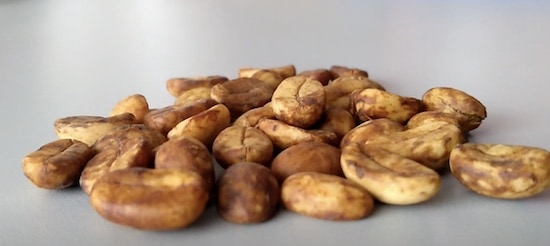Today we are going to deal with one of those subjects that we like very much, and that brings us closer to the general public because they are of capital importance in the final qualities of the product we consume. Still, they rarely get the attention they deserve. We are referring to coffee processing, a treatment that is carried out before the coffee is dried, and in particular to honey coffee, which is the direct result of one of these processes.
Honey coffee does not have a specific origin or belong to a specific region. Honey coffee can be found in Colombia, Brazil, Mexico or any other country. Its name has nothing to do with the harvest but with the way the beans are treated after harvesting and just before drying.

What is honey coffee? The three processes of coffee
Essentially, we can distinguish three processes in coffee: washed coffee (let’s call it “normal”), natural coffee, and finally, Honey coffee, which is the one we are going to explain in this article. To understand this, let’s briefly define each of the three processes.
We already know that coffee beans are harvested, normally in pairs, from the inside of the fruit of the coffee tree, known as the cherry. In other words, inside each cherry, there are two coffee beans. These beans are covered with several layers or films. If we name them from the outside inwards (outermost to innermost) would be the cherry itself, the mucilage, the parchment, the silverskin and finally, the coffee bean.
- In the washed coffee process, the bean is completely stripped of all the outer film (cherry and mucilage) except for the parchment, and this is how it is put to dry. We discuss this particular situation in our article on parchment coffee.
- Natural coffee, also called dry coffee, is coffee from which none of the outer layers are removed before drying. In other words, the whole cherry is dried, and the beans are peeled and removed after drying.
- Finally, in the case of honey coffee, an intermediate process takes place. Before drying, the cherry is removed, but not the mucilage. For this reason, you may also see it referred to as semi-washed coffee. It is usually covered with plastic sheeting while drying to generate more moisture. And if you ever hear of honey washed coffee, this is a mistake. Coffee can be washed, or semi-washed, but not both. If it is washed, it is not honey.
So honey coffee could be considered an intermediate link between washed and natural. It should be remembered that no one process is necessarily better than the other; the quality, in this case, depends on the harvesting of the coffee and whether the beans are dried correctly. If you find the name Honey speciality coffee somewhere, it is not because honey is synonymous with excellent quality, but because that particular harvest has obtained the minimum score in tasting to be considered a speciality coffee.
It should also be pointed out that the terms natural or dried coffee have nothing to do with natural roasting, which is a process that the beans go through long after they have been washed.
Difference between honey coffee and washed coffee
The difference between honey coffee and washed coffee is very simple: honey coffee retains the mucilage before drying, whereas washed coffee does not.
By retaining this small layer, the honey coffee bean has that characteristic yellowish-ochre colour that is responsible for its name. The slightly sticky or thick texture of the mucilage is also reflected in the name honey.
By the way, as a curiosity, the colour of the honey coffee bean can be darker or darker depending on whether it retains more or less mucilage. In reality, other factors also play a role, such as humidity, but we can simplify the matter by looking only at the quantity of this layer.
Thus, we can find yellow honey, red honey or even black honey (dark brown, almost black, when the bean retains a large amount of mucilage), which is the variety shown in the following photo:

Types of honey coffee
We have already seen that there are several types of honey coffee beans, depending on their “colour”. The spectrum generally ranges from white to black honey coffee, but the curious thing is that each honey variety requires different drying conditions. Let’s get to know them in more detail:
Yellow honey coffee
It needs about 8 days of drying, much less than the others. It is the honey coffee that has the least mucilage (around 50%) and therefore dries the fastest.
Red honey coffee
Under normal climatic conditions, a red honey coffee takes around 12-13 days to dry. It has a mucilage content of over 70%.
Black honey coffee
Black honey coffee retains most of its mucilage, takes much longer to dry, and the process is much more complex. It is usually covered with plastic or black cloth to generate more humidity, and it needs to be aired frequently. It can take around 3-4 weeks to dry completely. As a result of this complexity, it is also more expensive on the market.
What is honey coffee and what does this process achieve?
The reason for this type of treatment before the bean is dried lies in the ability of these layers (mucilage, cherry) to transmit aromas and nuances to the interior (the bean) when they are dried. In other words, washed beans do not have the same nuances as honey beans or natural beans.
In this case, the more mucilage a bean retains, the more sweetness it will impart during roasting. Therefore, honey speciality coffee will have sweeter and milder notes than a washed or natural bean from the same plant or the same harvest.
